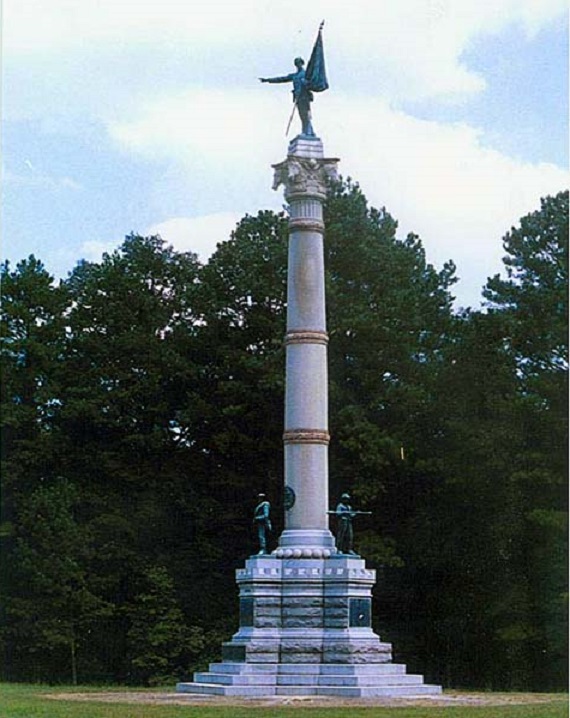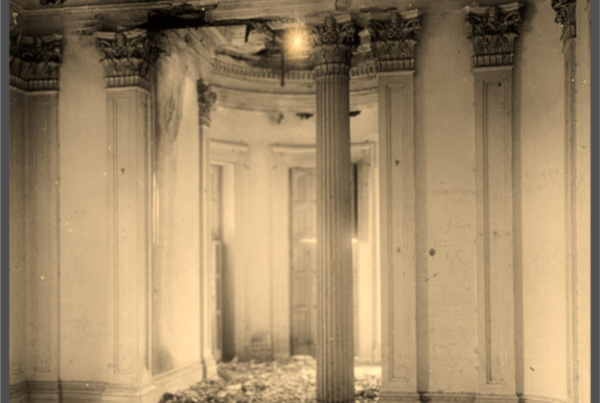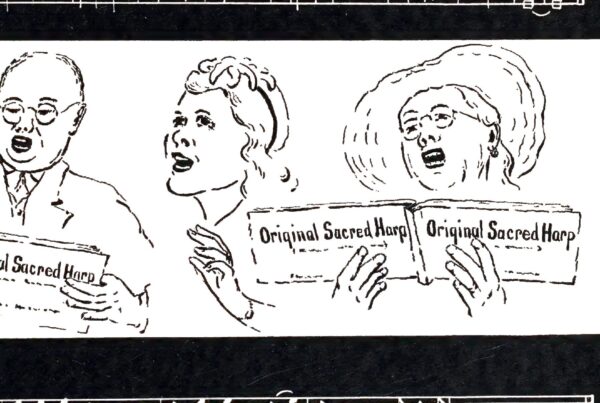Since the 1960s, the interpretation of Southern history and the War Between the States put forth by most of the news media and academia is largely a fraud. It is driven by the racist identity politics of the Democrat Party and not historical truth.
If Southern history was interpreted objectively as it was before 1960, instead of with liberal political hate as it is today, nobody would dare remove a monument to soldiers in a war in which 800,000 were killed and over a million wounded,[i] half of which were Confederate soldiers who were always hungry, ragged, outnumbered and outgunned, but exhibited valor such as the world had never seen.
Drew Gilpin Faust in her excellent book, This Republic of Suffering, Death and the American Civil War, uses the earlier statistics of 620,000 total deaths compiled by William F. Fox, and she writes that those deaths were “approximately equal to the total American fatalities in the Revolution, the War of 1812, the Mexican War, the Spanish-American War, World War I, World War II, and the Korean War combined.”[ii] If you use Hacker’s statistics, you’d have to add Vietnam, both Gulf Wars, Afghanistan and the war on terror; in other words, deaths in the War Between the States were higher than all other American wars combined, with room to spare.
Faust says the rate of death “in comparison with the size of the American population, was six times that of World War II. A similar rate, about 2 percent, in the United States today would mean six million fatalities.”[iii]
Confederate soldiers “died at a rate three times that of their Yankee counterparts; one in five white Southern men of military age did not survive the Civil War.”[iv]
She quotes James McPherson who writes that “the overall mortality rate for the South exceeded that of any country in World War I and that of all but the region between the Rhine and the Volga in World War II.”[v]
To personalize some of those statistics, Confederate Col. George E. Purvis was quoted in Confederate Veteran magazine, March, 1897, from an article he had written about Union Gen. Henry Van Ness Boynton and the Chickamauga and Chattanooga National Military Park. Gen. Boynton, with great respect for the courage of the Confederates he faced, wanted to make it a sacred memorial, not just to Union valor, but American valor.
Col. Purvis writes that Gen. Boynton and a friend had visited the Chickamauga battlefield on a quiet Sunday morning in the summer of 1888 and heard singing in a church nearby. The general’s thoughts went from those sweet sounds to the hellish and “fearful horrors of that other Sunday, when the very demons of hell seemed abroad, armed and equipped for the annihilation of mankind” almost a quarter of a century earlier:[vi]
They saw again the charging squadrons, like great waves of the sea, dashed and broken in pieces against lines and positions that would not yield to their assaults. They saw again Baird’s, Johnson’s, Palmer’s, and Reynolds’s immovable lines around the Kelley farm, and Wood on the spurs of Snodgrass Hill; Brannan, Grosvenor, Steedman, and Granger on the now famous Horseshoe; once more was brought back to their minds’ eye, “the unequaled fighting of that thin and contracted line of heroes and the magnificent Confederate assaults,” which swept in again and again ceaselessly as that stormy service of all the gods of battle was prolonged through those other Sunday hours.
Their eyes traveled over the ground again where Forrest’s and Walker’s men had dashed into the smoke of the Union musketry and the very flame of the Federal batteries, and saw their ranks melt as snowflakes dissolve and disappear in the heat of conflagration.
They stood on Baird’s line, where Helms’s Brigade went to pieces, but not until three men out of four – mark that, ye coming heroes! – not until three men out of every four were either wounded or dead, eclipsing the historic charge at Balaklava and the bloody losses in the great battles of modern times.
They saw Longstreet’s men sweep over the difficult and almost inaccessible slopes of the Horseshoe, “dash wildly, and break there, like angry waves, and recede, only to sweep on again and again with almost the regularity of ocean surges, ever marking a higher tide.”
They looked down again on those slopes, slippery with blood and strewn thick as leaves with all the horrible wreck of battle, over which and in spite of repeated failures these assaulting Confederate columns still formed and reformed, charging again and again with undaunted and undying courage.
In the “Balaklava” reference above, Gen. Boynton is noting Confederate valor far in excess of the famous “Charge of the Light Brigade” of the British cavalry against Russian forces in the Battle of Balaclava, October 25, 1854, in the Crimean War.
The unfounded bigotry against the South in history today is liberal politics and not history. Every Confederate monument that has been removed, was removed from a college campus or by a liberal Democrat starting with Mitch Landrieu in New Orleans, despite widespread support for the monuments in New Orleans and nationwide (over 60% of Americans in polls say to leave Confederate monuments alone). Michael Signer in Charlottesville couldn’t remove his monuments so he covered them with tarps that are constantly removed by outraged citizens.
These Democrat Party cultural Nazis are more like ISIS when ISIS destroyed the monuments in Palmyra, “a first-century Roman city in Syria whose classical architecture was an inspiration for the facade of the U.S. Capitol.”[vii] Mitch Landrieu had to remove the New Orleans monuments at night with snipers in bullet-proof vests standing guard.
ISIS destroys the monuments and culture of anybody who does not agree with them. Sound familiar?
There is a rot in history in this day and age. Keith Windschuttle, in The Killing of History, brings up a 1987 book by Allan Bloom, The Closing of the American Mind, in which Bloom argues persuasively that radical theory in academia had changed things so much that
humanities and social science departments within universities [where History resides] had abandoned objectivity and truth and become hopelessly politicized.[viii]
If you doubt that academia and the fake-news media are overwhelmingly liberal (with all that that means for truth), consider that in the 2016 election, the 33 wealthiest colleges in the United States gave $1,560,000 to Hillary Clinton. They gave Donald Trump $3,000.[ix]
Around 96% of money donated by journalists went to Hillary Clinton. In numbers of journalists giving, 50 gave to Republican Donald J. Trump, while 430 gave to Clinton. That means 10% of journalists donated to Republican Trump, and 90% to Democrat Clinton.[x]
Windschuttle writes: “Most young people today were taught to scorn the traditional values of Western culture – equality, freedom, democracy, human rights – as hollow rhetoric used to mask the self-interest of the wealthy and powerful. This teaching, Bloom argued, had bred a cynical, amoral, self-centered younger generation who lacked any sense of inherited wisdom from the past.”
It is worse than just the politicization of history. Windschuttle points out that for 2,400 years history has ranked “with philosophy and mathematics as among the most profound and enduring contributions that ancient Greece made, not only to European civilization, but to the human species as a whole.” History’s “essence” has been to “tell the truth, to describe as best as possible what really happened.”[xi]
Unfortunately today, “these assumptions are widely rejected.”[xii]
Many in the humanities and social sciences “assert that it is impossible to tell the truth about the past” because “we can only see the past through the perspective of our own culture and, hence, what we see in history are our own interests and concerns reflected back at us.” Because of this, supposedly, the entire point of history is no longer valid therefore “there is no fundamental distinction any more between history and myth” (Nietzsche had the same view over a hundred years ago) or between “fiction and non-fiction.”[xiii] In other words, nothing exists except what liberals tell us exists.
Perhaps academics are right because it is certainly fiction that slavery caused the War Between the States. As Shelby Foote said, slavery was an element in the drama but not the cause of the war. Over 94% of Southerners in over 80% of Southern families did not own slaves according to the 1860 census. Men do not charge into “the smoke of the Union musketry and the very flame of the Federal batteries” as Col. Purvis noted, so somebody else can own slaves; but they do so enthusiastically for independence, especially if their country is invaded, and especially because their sires were the patriots who won American independence in 1776.
Windschuttle reveals the outrageousness (almost to the point of stupidity) of the liberal academic mindset. This would be funny if it wasn’t so pathetic:
One of the reasons the humanities and social sciences have been taken over so quickly by the sophistry described in this book is because too few of those who might have been expected to resist the putsch understood what its instigators were saying. The uninitiated reader who opens a typical book on postmodernism, hermeneutics, poststructuralism et al must think he or she has stumbled onto a new foreign language, so obscure and dense is the prose. Now, this happens to be a very effective tactic to adopt in academic circles where there is always an expectation that things are never simple and that anyone who writes clearly is thereby being shallow. Obscurity is assumed to equal profundity, a quality that signals a superiority over the thinking of the uneducated herd.[xiv]
Like Big Brother said:
War is peace.
Freedom is slavery.
Ignorance is strength.
And now academia says:
Clarity is shallowness.
Obscurity is profundity.
David Harlan points out more academic gobbledygook and liberal hate in his book, The Degradation of American History. He says that, starting in the 1960s with the Civil Rights Movement, leftist historians began criticizing American history as elitist. They said it “focused our attention on great white men at the expense of women and minorities, that it ignored the racial and ethnic diversity of national life, that it obscured the reality of class conflict.” They wanted to expose the complicity of white men “in the violence and brutality that now seemed to be the most important truth about American history.” They “feel no need to say what is good in American history.”[xv]
Eugene D. Genovese, one of American’s greatest historians before his death in 2012, wrote this in 1994:
Rarely, these days, even on Southern campuses, is it possible to acknowledge the achievements of the white people of the South. The history of the Old South is now often taught at leading universities, when it is taught at all, as a prolonged guild-trip, not to say a prologue to the history of Nazi Germany. . . . To speak positively about any part of this Southern tradition is to invite charges of being a racist and an apologist for slavery and segregation. We are witnessing a cultural and political atrocity.[xvi]
Dr. Genovese goes on to say that this cultural and political atrocity is being forced on us by “the media and an academic elite.”[xvii]
The monuments and memorials of both sides that went up in the early twentieth century were hugely symbolic for our reunited nation and the healing from a war that had killed 800,000 and wounded over a million. Drew Gilpin Faust writes:
At war’s end this shared suffering would override persisting differences about the meanings of race, citizenship, and nationhood to establish sacrifice and its memorialization as the ground on which North and South would ultimately reunite. Even in our own time this fundamental elegiac understanding of the Civil War retains a powerful hold.”[xviii]
Monuments in the South were paid for by pennies from children and an impoverished region that had been destroyed 35 years earlier, but it found money, a little here and there over the years, to honor its warriors, leaders and their families, and courage such as the world had never seen before. As Union Gen. Boynton said, he
looked down again on those slopes, slippery with blood and strewn thick as leaves with all the horrible wreck of battle, over which and in spite of repeated failures these assaulting Confederate columns still formed and reformed, charging again and again with undaunted and undying courage.
We should have that same courage in defending our patrimony and our history from the barbarians at the gates. God help us.
[i] These are the widely accepted statistics of historian J. David Hacker of Binghamton University. See Rachel Coker, “Historian revises estimate of Civil War dead,” published September 21, 2011, Binghamton University Research News – Insights and Innovations from Binghamton University, http://discovere.binghamton.edu/news/civilwar-3826.html, accessed July 7, 2014. Hacker’s range is 650,000 to 850,000. He uses 750,000, but my feeling is that total deaths are on the high side of his range, so I use 800,000 in my writing.
[ii] Drew Gilpin Faust, This Republic of Suffering, Death and the American Civil War (New York: Alfred A. Knopf, 2008), xi.
[iii] Ibid.
[iv] Ibid.
[v] Faust, This Republic of Suffering, xii.
[vi] “American Valor at Chickamauga”, Confederate Veteran, Vol. V, No. 3, March, 1897.
[vii] “ISIS’ crimes against history”, Charleston, SC Post and Courier op/ed, September 1, 2015.
[viii] Keith Windschuttle, The Killing of History, How Literary Critics and Social Theorists Are Murdering Our Past (New York: The Free Press, 1996), 10.
[ix] “Donald Trump Campaign Lacking in Support from Academic Donors” by Carter Coudriet, August 16, 2016, http://www.forbes.com/sites/cartercoudriet/2016/06/16/donald-trump-campaign-lacking-in-support-from-academic-donors, accessed January 25, 2017.
[x] See David Levinthal and Michael Beckel article, October 27, 2016, “Journalists shower Hillary Clinton with campaign cash”, https://www.publicintegrity.org/2016/10/17/20330/journalists-shower-hillary-clinton-campaign-cash, accessed January 25, 2017.
[xi] Keith Windschuttle, The Killing of History, How Literary Critics and Social Theorists Are Murdering Our Past (New York: The Free Press, 1996), 1-2.
[xii] Ibid.
[xiii] Windschuttle, The Killing of History, 2, 7.
[xiv] Windschuttle, The Killing of History, 5.
[xv] David Harlan, The Degradation of American History (Chicago: University of Chicago Press, 1997), xv. This paragraph comes verbatim from the Introduction to my book, Charles W. Ramsdell, Dean of Southern Historians, Volume One: His Best Work (Charleston: Charleston Athenaeum Press, 2017).
[xvi] Eugene D. Genovese, The Southern Tradition, The Achievement and Limitations of an American Conservatism (Cambridge: Harvard University Press, 1994), xi-xii. This is also verbatim from Ramsdell, Dean of Southern Historians, Introduction.
[xvii] Ibid.
[xviii] Faust, This Republic of Suffering, xiii.







